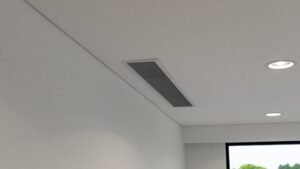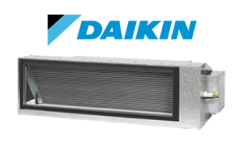
Air Conditioning Sydney • Terrace Houses
Split vs ducted for Sydney terraces — which is better for narrow homes?
Short answer: For most narrow Sydney terraces, a multi-split wins on cost, space and heritage flexibility; a zoned ducted system wins for whole-home comfort if you have ceiling/roof space and a cooperative strata/heritage setting.
Who is this for?
Owners of Victorian/Edwardian terraces and slim two-storey homes comparing split system vs ducted air conditioning Sydney under tight space, low ceilings and heritage rules.
best air conditioning for Sydney terrace houses
air conditioning options for narrow homes
ducted vs multi split for heritage terraces
EEAT / BIO
Prepared with input from KYC Air Conditioning (Sydney) — specialists in terrace installs, acoustic balcony units and strata/heritage approvals since 2015.
We’ve completed 300+ terrace projects across Inner West, Eastern Suburbs and Lower North Shore.
2) Product Overview & Specifications Main keyword appears in this section
What’s in the box (typical)
- Split / Multi-split: 1–5 indoor wall or floor consoles, 1 outdoor condenser (multi-head may share).
- Ducted: Indoor fan-coil in roof/ceiling, outdoor condenser, ducts, registers, return grille, zoning kit.
Key specs that matter
- Sound power of outdoor unit (LwA) and indoor sound pressure (dB(A)).
- Minimum ceiling void (ducted): often ≥ 300–350 mm for small systems.
- Available external wall/balcony area for condensers in narrow courtyards.
- Electrical capacity (amps), condensate drainage path, Wi-Fi control.
Price point (Sydney ballparks, installed)
- Single split (2.5–3.5 kW): $1,900–$3,500
- Multi-split (2–3 rooms): $4,500–$9,500
- Small ducted (2–3 zones): $9,500–$15,000+
- Medium ducted (4–6 zones): $13,500–$22,000+
Terrace complexity (access, heritage, condensate routing) can shift prices.
Target audience: Narrow homes, two-storey terraces, heritage streetscapes, tight courtyards, low roof space.
3) Design & Build Quality — fitting AC into a slim terrace
Visual impact
Street-facing façades often can’t show grilles or condensers. Multi-split indoor heads can hide on lane-way walls; ducted needs discreet ceiling registers and sufficient void.
Materials & construction
- Anti-vibration feet/brackets to tame hum on party walls.
- Rigid or flex-ducts sized for low ceilings; lined plenums to cut noise.
- UV-stable trunking; sealed penetrations; corrosion-resistant fixings.
Ergonomics/usability
- Service access: 400 mm clear around outdoor; ceiling access panel for ducted fan-coil.
- Filter access: easy on splits; ducted return grille needs ladder clearance.
- Durability: coastal hardware, drain trays, mini-pumps where gravity is impossible.
4) Performance Analysis
4.1 Core Functionality (cool/heat, quietly, in tight spaces)
- Primary use cases: Bedroom cooling upstairs, open-plan living downstairs, shoulder-season heating.
- Quant metrics: Delivered airflow (L/s), noise (dB(A)), COP/EER, zoning response times.
- Real-world tests: Newtown 2-storey (multi-split 2+1); Paddington 2-storey (small ducted 3 zones); Balmain lane-way (multi-split 3 heads, acoustic screen).
4.2 Key Performance Categories
Category 1 — Noise & neighbours
Terraces share walls. Choose outdoor units ≤ 60–62 dB(A) LwA and use acoustic pads/shrouds. Ducted needs lined ducting and careful return-air placement.
Category 2 — Space & access
Multi-split thrives where ceiling voids are too shallow for ducted. Ducted wins when roof space exists (rear skillion or attic conversion).
Interactive: Quick kW Estimator (room guide)
Room area (m²) • Insulation• Sun
Result:
Guide only. For terraces, stair voids and heat-load quirks can nudge sizing.
Interactive: 5-Year Cost of Ownership (rough)
System• Runtime (hrs/day summer) • Electricity (¢/kWh)
Result:
Assumes typical COPs: split 3.8, ducted 3.2 with zoning savings (-10% if used well).
5) User Experience — installs in narrow homes
- Site check: Measure ceiling voids (need ~300–350 mm for small ducted). Map condenser placement in rear court or roof.
- Approvals: Heritage/strata may restrict external units. Multi-split is often easier to approve.
- Install day: Protect timber stairs, ornate ceilings and plaster. Plan condensate routes (tundish or FW).
- Daily use: Splits allow room-by-room control; ducted with zoning offers whole-home comfort via one controller or app.
6) Comparative Analysis — split vs ducted for terraces
| Aspect | Multi-split | Ducted (zoned) |
|---|---|---|
| Space fit (low ceilings) | Excellent | Needs ceiling/roof void |
| Upfront cost (2–3 rooms) | Lower | Higher |
| Whole-home comfort | Good (add heads) | Excellent |
| Noise risk to neighbours | Low–Med (with pads/screen) | Low–Med (depends on duct design) |
| Approvals (heritage/strata) | Often easier | May be harder (registers/roof plant) |
| Service access | Easy (indoor heads) | Needs access panel |
| Energy efficiency | High (room-only use) | High with good zoning |
| Aesthetics | Visible heads | Discreet grilles |
Unique selling point: In narrow homes, space and approvals decide. If you can’t fit ducted properly, a well-planned multi-split delivers most of the comfort without surgery.
7) Pros and Cons
What We Loved
- Multi-split: modular, cheaper upfront, great for odd terrace layouts.
- Ducted: seamless look, single controller, even comfort across levels.
- Both: modern Wi-Fi control and quiet-mode outdoor units.
Areas for Improvement
- Multi-split: multiple indoor heads on walls may not suit heritage interiors.
- Ducted: needs height/roof space; poor installs can be noisy/inefficient.
- Either: balcony or lane-way noise complaints if placement is poor.
8) Evolution & Updates (2025)
- Low-profile ducted cassettes can fit ~250–270 mm voids (brand-dependent) — opening ducted options in some terraces.
- Night-quiet modes on outdoor units reduce neighbour disturbance in tight lanes.
- Smart zoning trims runtime on ducted, closing the efficiency gap with splits.
9) Purchase Recommendations
Best For
- Multi-split: Narrow homes with limited ceiling space; staged budgets; rooms used at different times.
- Ducted: Renovations/attic conversions with ≥300 mm void; owners wanting a “no-heads-on-walls” finish.
Skip If
- Skip ducted if voids are too shallow or heritage won’t allow registers.
- Skip multi-split if you strongly dislike visible indoor heads.
Alternatives to Consider
- Concealed mini-ducted for upstairs only + split downstairs.
- Floor-console splits where wall space is limited or ceilings ornate.
- High-wall + heat-transfer fans to share cool air across stair voids.
10) Where to Buy / Contract
- Use licensed ARCtick/NSW contractors experienced in terrace house AC installation challenges.
- Ask for a noise & drainage plan, plus strata/heritage motion wording if needed.
- Brands that fit terraces well: Daikin, Mitsubishi, Fujitsu — check low-profile indoor units and quiet outdoor models.
11) Final Verdict
Overall rating: for most terraces; where space/approvals allow. Both are excellent when designed for narrow-home airflow and noise.
Bottom line: If your voids are tight and approvals tricky, choose multi-split. If you’re renovating and can create the space, a zoned ducted delivers premium, even comfort.
12) Evidence & Proof
Short explainer (YouTube)
A quick look at space, noise and drainage considerations for narrow homes (2025).
Screenshots / Diagrams
Low-profile ducted sketch: 270 mm void, short runs, central return in hallway ceiling.
Fan-coil
Ducts
Ducts
Grilles
Multi-split layout: 1 outdoor in rear lane, 2 heads upstairs, 1 down, condensate to sanitary via tundish.
Case studies (Sydney 2025)
- Newtown narrow terrace: Multi-split 3 heads; acoustic screen in lane; “night-quiet” mode—no neighbour complaints.
- Paddington attic-converted terrace: Low-profile ducted (3 zones); return in stair hall; condensate to bathroom tundish.














